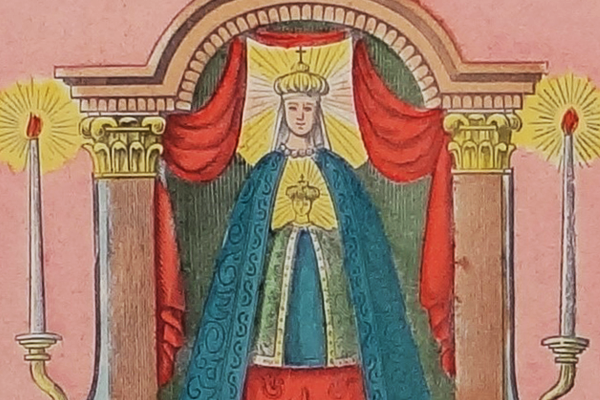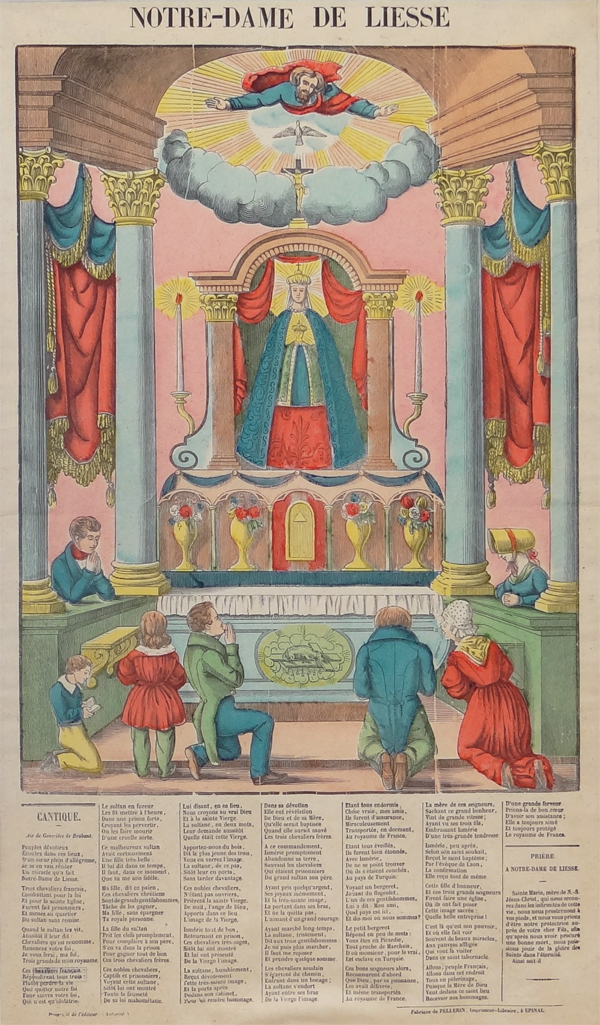Blogs

Our Lady of Liesse
Liesse in French expresses bliss, jubilation, and exaltation. The joy expressed in this title of Our Lady is that of three knights and brothers freed from Saracene captivity; it also exalts the conversion of a Muslim princess to the Catholic faith, and resonates the jubilant gratitude of all those who were blessed in many different ways by the miraculous image of Our Lady of Liesse, a small statue of oriental origin and a black Madonna. Liesse–Notre–Dame is the name of a small town in Northern France (Picardy; Diocese of Soisson).
While protecting the fortress of Bersabee, near Ascalon, three knights of St. John of Jerusalem, brothers and members of the noble house of Eppes in Picardy (France) fell in a Saracene ambush and were taken to the Sultan of Egypt. The knights refused conversion to Islam, inspite of promises of gold, honor, and many theological arguments. The Sultan decides to send his own daughter Ismeria to the dungeon to convert the three knights. From the knights she learns about the Christian god and Our Lady which prompts her desire to embrace the Christian faith. Her resolve to convert is strengthened by the miraculous and resplendent image of Mary, Our Lady of Liesse, angels had brought to the three knights for consolation. Ismeria is instrumental in the liberation and flight of the knights. During their flight all four fall asleep, and during their sleep are miraculously transported to Northern France. Awakening close to the Eppes’ castle in Picardy, their joy and that of their family is immense. Ismeria receives baptism in the cathedral of Laon. The knights had preserved the statue of the oriental Madonna, and build a handsome church to receive Our Lady of Liesse (12th century). This story is told in a canticle of 30 stanzas printed at the bottom of our print. It is followed by a prayer to Our Lady asking for her protection in this broken age.
At a time when new bridges need to be built between East and West, between Muslims and Christians, the figure of Ismeria is like a symbol of unity. The Muslim princess is a reminder of Our Lady’s prominent presence in the Qur’an. She is the only woman mentioned by name in this holy book. She is given more attention than many other prophets. Two chapters are given her name (Maryam, chapter 19) and that of her family (Imrans, chapter 3). Mary in the Qur’an has many titles describing her spiritual profile:
- She is Quanita, absorbed in prayer and contemplation.
- She is Siddiquah, the one who believes sincerely and completely.
- Sajidah, she prostrates before God in worship;
- Rakilah she follows the command of the angel at the Annunciation and bows down to the will of God.
- Tahirah reminds us that she had been purified.
- Mustafia, she is the chosen one.
- Sa:jmah, she is the Muslim model of fasting.
– Father Johann G. Roten, S.M., Director of Research and Special Projects
Visit the exhibit Epinal: Popular Art for Mind and Heart in the Marian Library Gallery to see 33 Images of Epinal, categorized into nine themes, from the Marian Library collection.


